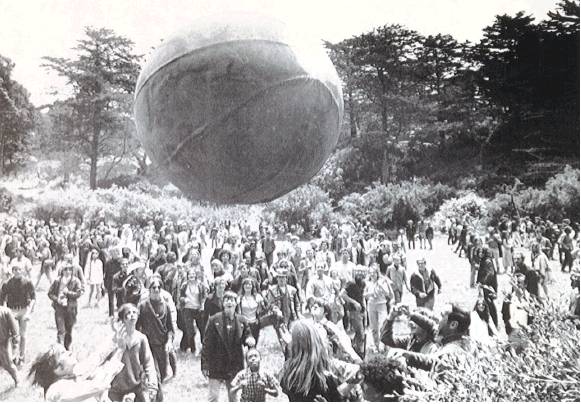NATIVE SON
Summer of Love a season of discontent to many
By Carl Nolte
It is time to take off those once cool granny glasses and stop being nostalgic about the Summer of Love, those great days in 1967 when all the young people in America came to San Francisco with flowers in their hair.
Or as San Francisco Travel, the city’s official tourism agency, puts it: “Throughout 2017, San Francisco will revel in an exhilarating celebration of the most iconic cultural event in its history: the Summer of Love.
“In 1967, nearly 100,000 free-spirited adventurers congregated in the Haight-Ashbury neighborhood near Golden Gate Park and created some of the era’s most memorable music, art, fashion and literature. Wearing flowers in their hair, people danced in the streets. Five decades later San Franciscans will pay tribute to the 50th anniversary of the Summer of Love.”
It sounds like good, clean, profitable fun, like “selling, sweet candy-covered memories of 1967, especially to people who weren’t there,” said Country Joe McDonald, the singer and songwriter who was there. “It’s a selective memory. It’s bull—. ”
The trouble with living in the past is that you remember the good times and try to forget the bad, like a love affair gone sour.
It may have been the Summer of Love in some parts of San Francisco, but the scene in the Haight was not really much to romanticize over. The streets were crowded and dirty. There were hundreds of panhandlers and a huge drug problem. There was peace and love, but also a big civic problem. Something was going on in the Haight. “But you don’t know what it is, do you, Mr. Jones?” as the Bob Dylan song went.
The rest of the country saw that season differently, and across much of America it was what the media called the Long Hot Summer.
There were more than 150 riots, or civil disturbances, in the summer of 1967, in Atlanta, Boston, Cincinnati, Detroit, Chicago, New York, Newark, N.J., and other places. The country was afire, mostly about civil rights, about race.
“It was a terrible time for many Americans,” Country Joe said.
A July riot in Detroit left 43 dead, 1,189 injured, 7,000 people arrested and 2,000 buildings burned down. It was the second-largest riot in American history. I doubt they are celebrating that this summer in Detroit.
And then there was the war in Vietnam. Country Joe, who has been both a sailor in the U.S. Navy and an antiwar figure — remember his “I-Feel-Like-I’m-Fixin’-to-Die Rag” — has mixed feelings about it all.
“On the 30th anniversary of the Summer of Love, I set up a Vietnam War memorial with the names of those killed on the other end of the stage. At one end we had the music, and the other end we had the names.”
He checked the Internet. In 1967, he said, there were almost 500,000 U.S. troops in Vietnam. “A phenomenal number,” Country Joe called it. “There were 11,153 killed in action in 1967.”
Country Joe has a website — www.countryjoe.com/solcas.htm — that lists the Americans killed in Vietnam every single day of that summer. On June 25, 1967, exactly 50 years ago, 22 Americans died in the war. This does not count Vietnamese deaths.
“An alternate reality,” he said. “I don’t think the relatives of those people will ever forget 1967.”
On the other hand, he said, that year brought real change. Before the 1960s, “there were words you couldn’t say and things you couldn’t do,” Country Joe said. “We broke with the mores of the World War II generation. That’s still going on.”
Country Joe McDonald was 25 in the summer of 1967. “I had a good time,” he said.
Fifty years later, on the first day of summer, Haight Street is much different.
Now Haight Street is clean and inviting. Gentrified. Nostalgia is in the air. A boutique at Haight and Cole streets has a sign outside that says the Grateful Dead played in front of the store in 1967. Jimi Hendrix played guitar across the street. And one day during the Summer of Love, Janis Joplin walked by. In person, man.
There is a Big Bus tour stop at Haight and Shrader streets. Tourists get on and off. On board, a narration about the Summer of Love is available in nine languages.
At the Whole Foods market at Haight and Stanyan, Summer of Love tote bags are on sale for $29.99.
Four young people were standing on the corner, dressed in the style of 1967 hippies. One or two of them had plastic flowers in their hair. “You weren’t here for the Summer of Love, were you?” I asked one woman in her 20s.
“No,” she said. “But I wish I was.”
Carl Nolte is a San Francisco Chronicle columnist. His column appears every Sunday. Email: cnolte@sfchronicle.com Twitter: @carlnoltesf


